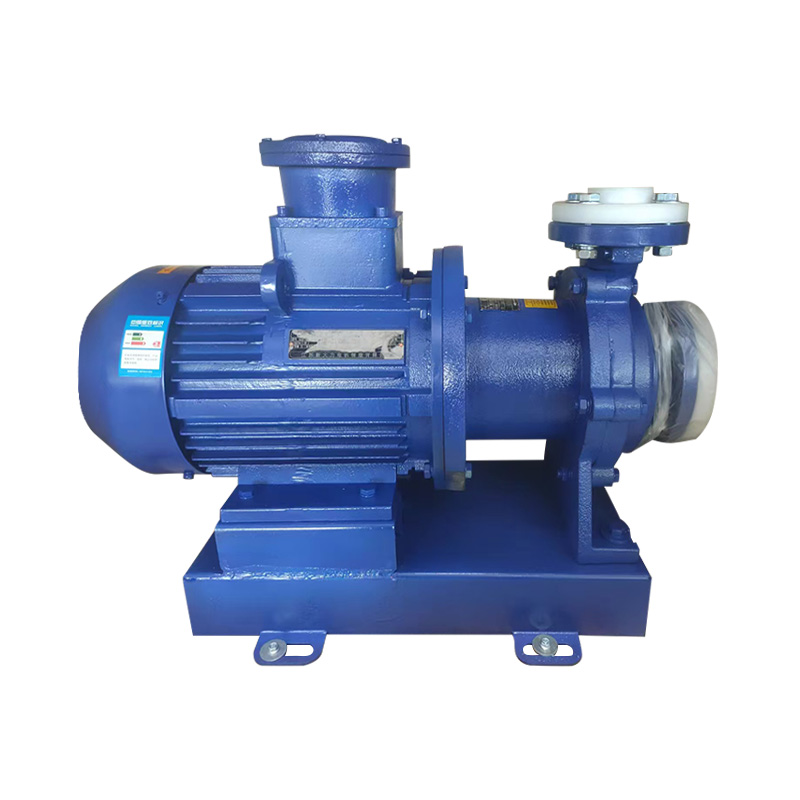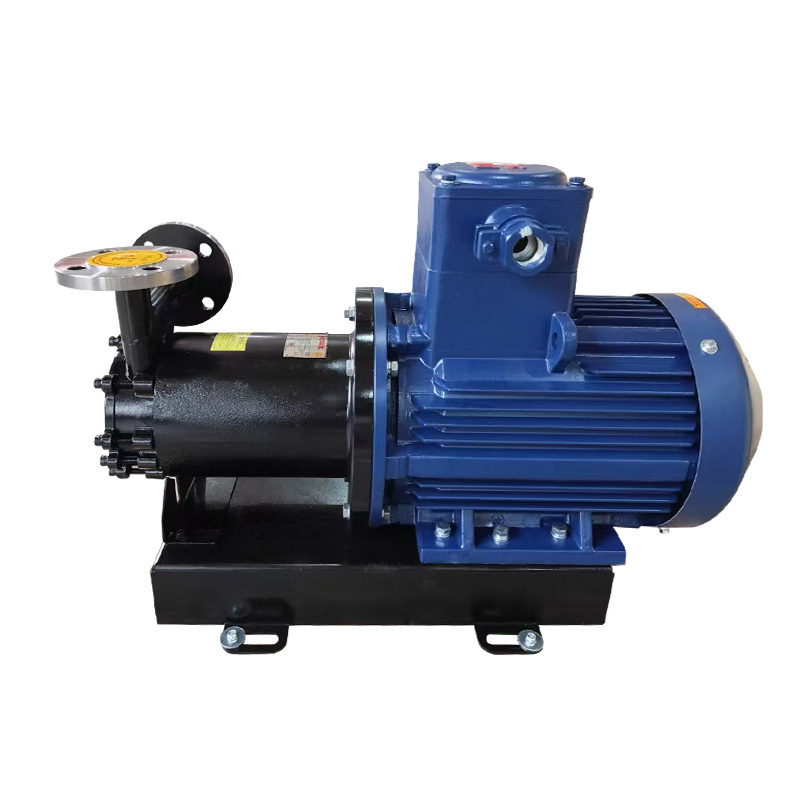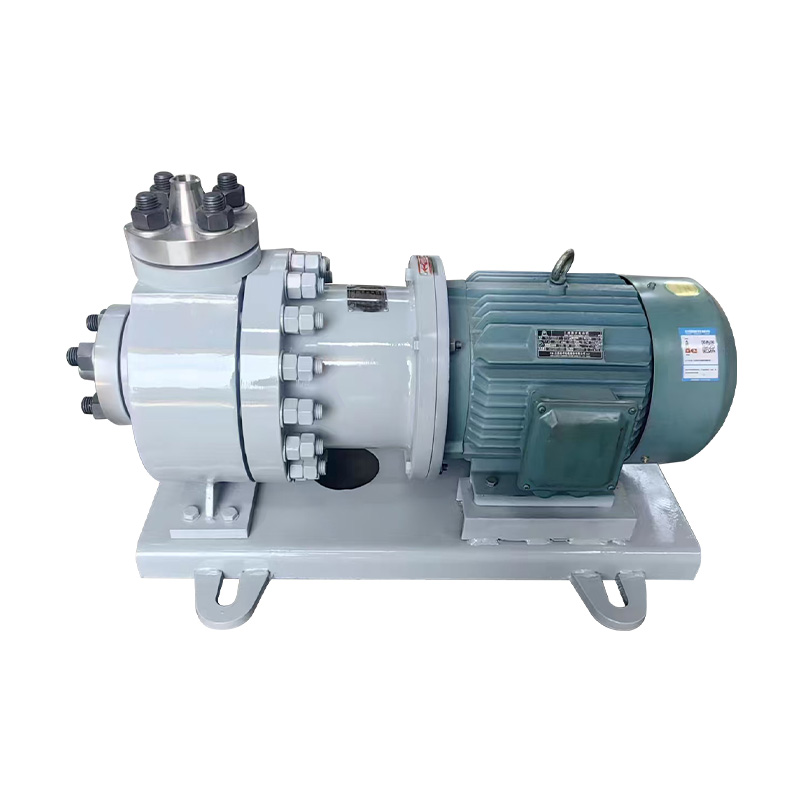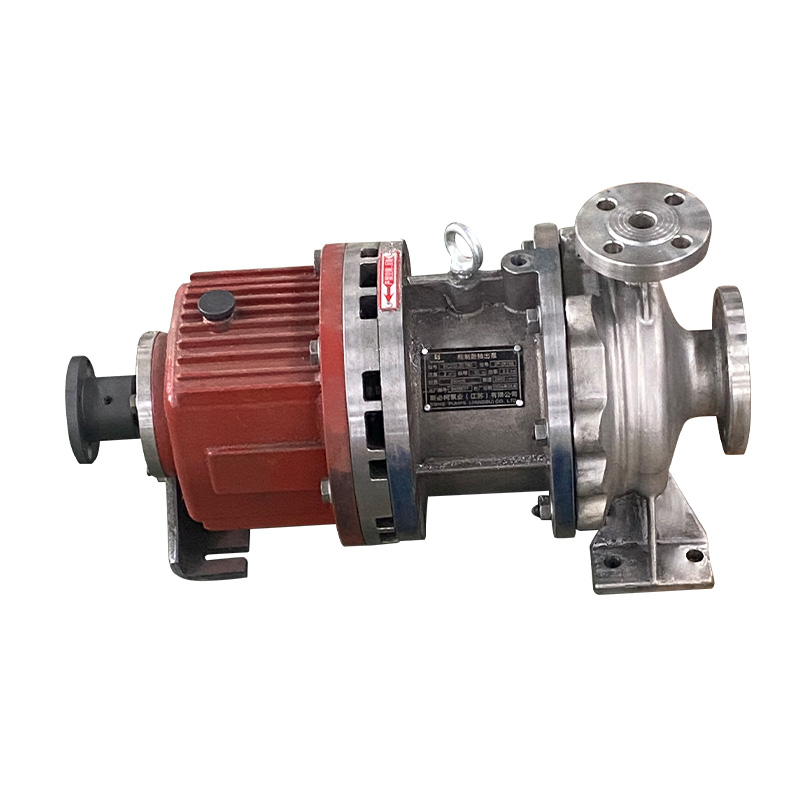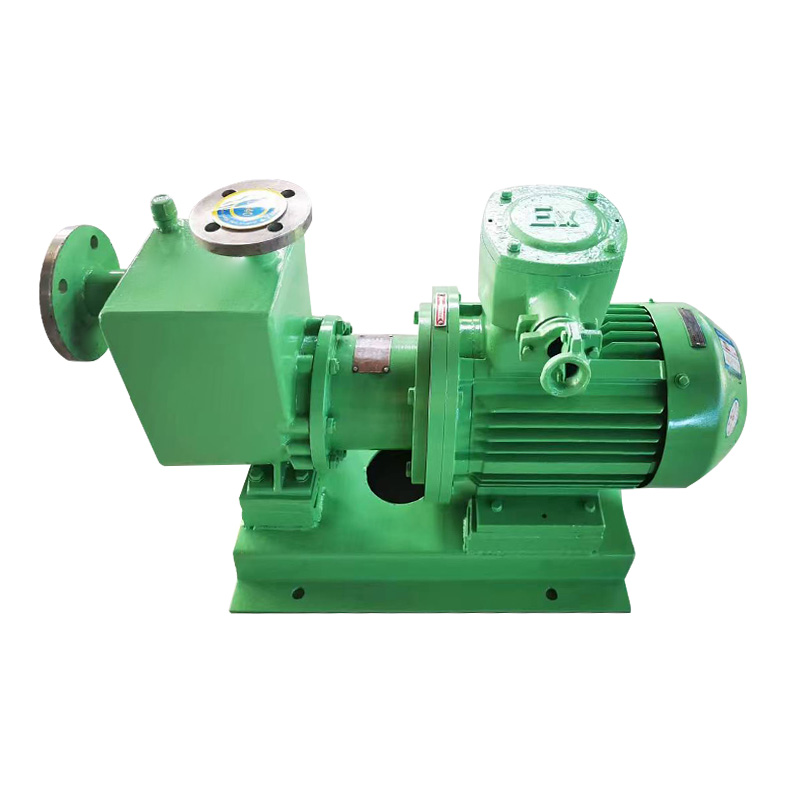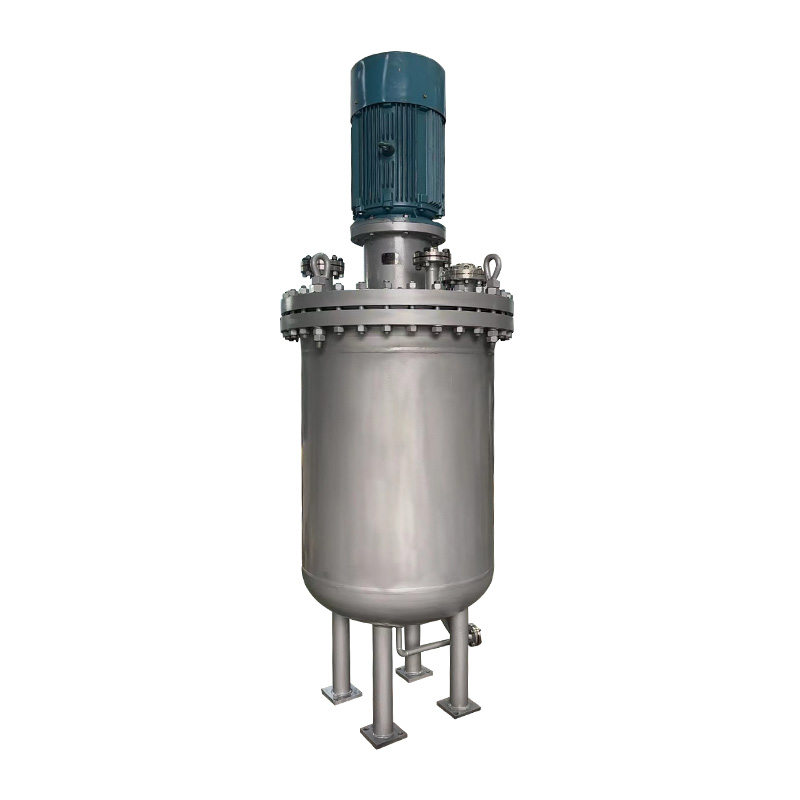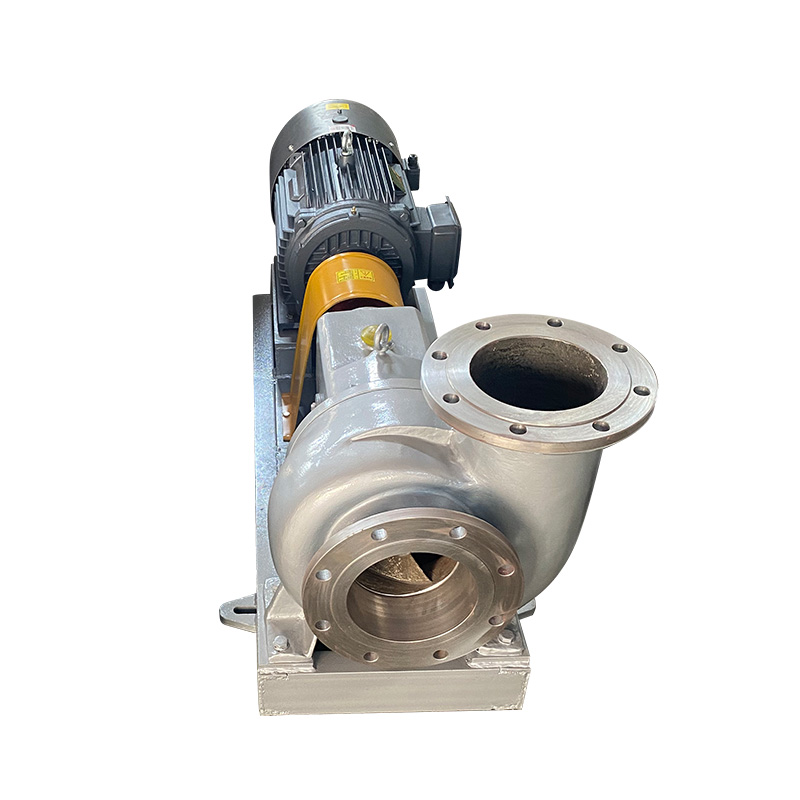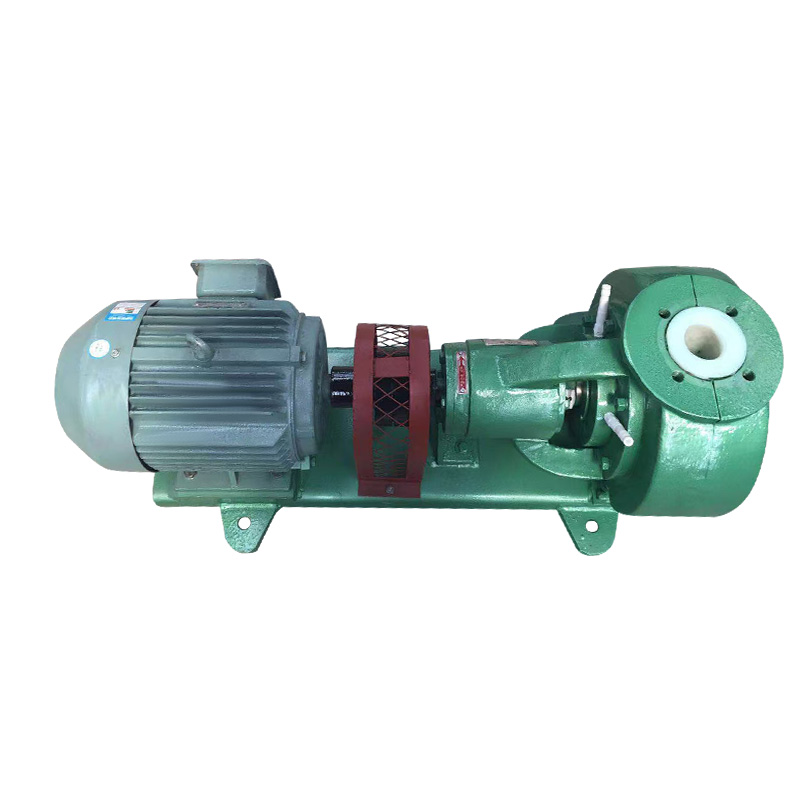Introduction: The Unseen Industrial Heart
Amidst the vast and complex landscape of the petrochemical industry, there exists a critical piece of equipment that functions as its unwavering "heart": the Petrochemical Process Pump. This essential machinery is responsible for the safe, reliable, and continuous movement of various process fluids—from crude oil and hydrocarbons to aggressive chemicals and intermediates—throughout the entire production facility. Its relentless operation is the fundamental prerequisite for the stability, efficiency, and safety of the entire plant. But what enables this industrial workhorse to perform under such demanding conditions? This article delves into the core of the Petrochemical Process Pump, exploring the rigorous standards, robust designs, and innovative technologies that allow it to meet the industry's most severe challenges.
Chapter 1: The Core Mission and Severe Challenges of Petrochemical Process Pumps
The Petrochemical Process Pump is far more than a simple liquid mover; it is the linchpin of operational integrity in refineries and chemical plants. Its core mission is to ensure the precise, safe, and uninterrupted transfer of process fluids from one unit to another, maintaining the critical flow rates and pressures required for continuous production.
However, this mission is carried out in some of the most punishing environments in industry. These pumps are routinely tasked with handling:
- Extreme Temperatures: Fluids can range from cryogenically cold to highly overheated, testing material integrity and dimensional stability.
- High Pressures: Systems often operate under immense pressure, demanding robust mechanical construction to prevent catastrophic failure.
- Corrosive and Erosive Media: The fluids transported are frequently highly corrosive, such as acids, caustics, or saltwater, or contain abrasive particles that can rapidly wear down internal components.
- Hazardous Fluids: A primary concern is the handling of flammable, explosive, or highly toxic liquids. In these scenarios, even a minor leak is unacceptable, placing an absolute premium on leak-free operation.
It is against this backdrop of severe challenges that the design and manufacture of a Petrochemical Process Pump are defined. The relentless demands for ultimate reliability, mechanical strength, and superior sealing performance separate this specialized equipment from standard industrial pumps.
Chapter 2: The Industry's Golden Rule: Understanding the API 610 Standard
Given the severe operational challenges outlined previously, it is clear that not every pump is qualified for such critical duty. The industry required a unified, high-standard benchmark to ensure utmost safety and reliability. This is where the concept of an API 610 Process Pump becomes paramount, establishing the definitive "golden rule" for centrifugal pumps in hydrocarbon processing.
API 610, a standard developed and maintained by the American Petroleum Institute, is the internationally recognized and most stringent specification for centrifugal pumps in petroleum, petrochemical, and natural gas plants. It is not a mere guideline but is often a mandatory requirement in project specifications.
The standard provides comprehensive design criteria that go far beyond basic functionality, meticulously governing:
- Pressure Containment: Defining minimum requirements for pump casing and component strength to withstand internal pressure and thermal shocks.
- Shaft Sealing Systems: Specifying rigorous standards for both conventional mechanical seals and their support systems, ensuring maximum containment and control.
- Ruggedness and Reliability: Mandating features like heavier shafts, more robust bearings, and improved rotor dynamics to ensure extended service life under continuous, heavy-duty operation.
- Operational Safety: Incorporating design features that minimize risks associated with fire, leakage, and other operational hazards prevalent in the industry.
Therefore, specifying an API 610 Process Pump is not about selecting a brand; it is about committing to a proven level of engineering excellence. It signifies a pump designed from the ground up to deliver the exceptional durability and failsafe performance that the petrochemical industry demands.
Chapter 3: Born for Extremes: The Fusion of Heavy-Duty and Centrifugal Technology
While the API 610 standard sets the performance rules, the Centrifugal Process Pump provides the dominant technological platform for achieving them in petrochemical service. Its popularity stems from a simple yet highly effective principle: using a rotating impeller to impart kinetic energy (velocity) to a fluid, which is then converted into potential energy (pressure) within a volute or diffuser casing. This design allows for a smooth, continuous flow, high efficiency, and relatively simple construction compared to positive displacement alternatives.
However, a standard centrifugal pump is not sufficient for the severe duties of a petrochemical plant. This is where the concept of the Heavy Duty Process Pump emerges. It represents a specialized class of centrifugal pump engineered with enhanced features to meet the rigorous demands of API 610 and withstand the previously mentioned extreme conditions. The "Heavy-Duty" designation is a direct response to the need for superior mechanical integrity and extended service life.
The distinction between a general-purpose centrifugal pump and a heavy-duty process pump is profound, as illustrated in the following parameter comparison:
| Parameter / Feature | General Purpose Centrifugal Pump | Heavy-Duty Process Pump (API 610 Compliant) |
|---|---|---|
| Design Standard | Based on general industrial standards (e.g., ANSI/ASME B73.1) | Explicitly designed to meet the stringent requirements of API 610 standard. |
| Casing Design | Often a simple volute casing; may be designed for lower pressure ratings. | Robust, centerline-supported casing to handle thermal expansion and high pressures without misalignment. |
| Shaft & Rotor | Relatively smaller shaft diameter; standard dynamic balancing. | A significantly thicker, more rigid shaft to minimize deflection, critical for seal and bearing life. Rotor undergoes precision balancing. |
| Bearing System | Standard bearings with basic lubrication; shorter design life. | Heavy-duty, oversized bearings with advanced lubrication systems (e.g., oil mist) for a much longer, more reliable service life. |
| Sealing Capability | Designed for standard mechanical seals or packing, suitable for benign fluids. | Specifically designed to accommodate advanced, highly reliable mechanical seal systems (single, double, tandem) for zero leakage of hazardous fluids. |
| Operational Life | Designed for a shorter operational life, often with more frequent maintenance intervals. | Engineered for a minimum of 25,000 hours of continuous operation under extreme conditions. |
| Application Focus | Water, coolants, mild chemicals, and other non-hazardous fluids in general industry. | High-temperature hydrocarbons, corrosive chemicals, high-pressure boiler feed water, and other critical, hazardous services. |
This fusion of the efficient centrifugal principle with a heavy-duty mechanical construction creates the workhorse of the petrochemical industry. It is a pump built not just to function, but to endure. The oversized shaft resists the stress of continuous operation and sudden load changes, the robust bearings provide unwavering support, and the API-compliant casing safely contains the process fluid. This combination ensures that the pump can deliver the relentless performance required, making the Heavy Duty Process Pump the definitive solution for the most demanding industrial applications.
Chapter 4: Beyond Petroleum: Broader Chemical Applications and the Sealing Revolution
The principles of reliable fluid handling, perfected for the petroleum industry, extend far beyond the refinery fence. The term Chemical Process Pump encompasses a broader category of pumps designed to handle a vast spectrum of aggressive, sensitive, or pure chemicals across industries like pharmaceuticals, fine chemicals, and food processing. While a Petrochemical Process Pump is a specific, high-pressure and high-temperature subset of this category, the fundamental challenge remains universal: ensuring absolute containment of the process fluid.
In both petrochemical and general chemical contexts, the most critical point of potential failure is the sealing mechanism where the rotating shaft enters the stationary pump casing. Traditional mechanical seals, while highly advanced, remain a potential leak path. For fluids that are intensely corrosive, ultra-pure, highly toxic, or explosively flammable, even a minuscule, permissible leak is unacceptable. This inherent vulnerability sparked a revolution in pump technology: the move towards sealless designs, epitomized by the Sealless Magnetic Drive Pump.
The core innovation of a magnetic drive pump is the elimination of the physical shaft penetration. Instead, it uses a powerful magnetic coupling to transmit torque through a sealed containment shell. An external magnet assembly, driven by the motor, rotates and induces a magnetic field that causes an internal magnet assembly (connected to the impeller) to follow suit. This creates a completely static seal, fundamentally eliminating the possibility of shaft seal leakage.
The operational and safety implications of this design are profound, making it a superior choice for a wide range of critical applications. The following table contrasts this revolutionary technology with traditional sealed pumps:
| Parameter / Characteristic | Traditional Sealed Centrifugal Pump | Sealless Magnetic Drive Pump |
|---|---|---|
| Fundamental Leakage Path | The rotating shaft seal is a inherent potential leak path, requiring monitoring and maintenance. | Zero mechanical shaft seal; hermetically sealed by the containment shell, eliminating the primary leakage risk. |
| Emissions & Safety | Fugitive emissions, though minimal in well-maintained API pumps, are a design possibility. | Ideal for containing Volatile Organic Compounds (VOCs), hazardous air pollutants, and toxic fluids, enhancing workplace safety and environmental compliance. |
| Fluid Handling | Excellent for a wide range of fluids, but seal compatibility and flushing are critical for corrosive or abrasive media. | Superior for handling highly corrosive, expensive, or ultra-pure fluids, as there is no risk of seal damage or contamination from seal support systems. |
| Maintenance & Lifecycle | Maintenance cycles are often dictated by seal wear and the health of complex external seal support systems (plans, flush, etc.). | No seal-related maintenance is required. The primary wear component is the internal bearing, which is lubricated and cooled by the pumped fluid. |
| Efficiency & Cost | Generally high mechanical efficiency. Lower initial cost but potential for higher lifetime cost due to seal maintenance, fluid losses, and support systems. | Slightly lower efficiency due to magnetic slip and internal fluid circulation for bearing cooling. Higher initial investment but can offer a lower total cost of ownership by eliminating seal maintenance, fluid loss, and support systems. |
| Abnormal Operation Risks | Running dry, even briefly, can cause catastrophic failure of the mechanical seals. | Running dry or operating beyond design limits can lead to rapid demagnetization of the coupling magnets and damage to the internal bearings lubricated by the process fluid. |
The advent of the Sealless Magnetic Drive Pump represents a paradigm shift in process safety and reliability. It is the definitive technological answer for applications where leakage is not an option. By containing the fluid entirely within a sealed system, it provides an unmatched level of protection for personnel, the environment, and the process itself, truly fulfilling the ultimate containment mandate of the modern Chemical Process Pump.
Conclusion: How to Select the Right Industrial Heart for Your Application?
The journey through the world of Petrochemical Process Pumps reveals a landscape defined by extreme demands, rigorous standards, and specialized technological solutions. We have seen that this critical equipment is not a single, one-size-fits-all product, but a category of precision-engineered machinery where the correct selection is paramount to safety, efficiency, and operational longevity. The choice between a robust, sealed pump and a revolutionary, sealless one hinges on a careful analysis of your specific process conditions.
The decision-making process should be guided by a systematic evaluation of key parameters. The following table provides a comparative framework to help narrow down the optimal technology for your application:
| Decision Factor | API 610 Heavy-Duty Centrifugal Pump (Sealed) | Sealless Magnetic Drive Pump |
|---|---|---|
| Primary Application Focus | The standard for general refinery and petrochemical services: crude oil, hydrocarbons, high-pressure/temperature water, and other process fluids where high efficiency is critical. | Ideal for handling highly hazardous (toxic, flammable, explosive), ultra-pure, or highly corrosive chemicals where leakage is unacceptable. |
| Key Selection Driver | Proven reliability under high pressure and temperature, maximum mechanical efficiency, and adherence to the mandatory API 610 standard for hydrocarbon services. | Absolute Containment. Eliminating the risk of fugitive emissions, protecting the environment and personnel, and preventing product loss. |
| Fluid Characteristics | Excellent for a wide range of fluids, including those with mild abrasives. Performance depends on seal and material selection. | Superior for corrosive fluids and valuable products. Not suitable for fluids with abrasives or polymers that can damage internal bearings, or for rapid-changing temperatures that can crack the containment shell. |
| Operating Window | Designed for a very broad range of temperatures and pressures, often exceeding the capabilities of magnetic drive pumps. | The operating range is constrained by the magnetic strength of the coupling and the material of the containment shell. High temperatures can cause demagnetization. |
| Lifecycle Cost & Maintenance | Lower initial cost, but potentially higher lifetime cost due to planned seal maintenance, replacement parts, and potential fluid loss. Requires monitoring of seal support systems. | Higher initial investment, but can offer a lower total cost of ownership for suitable applications by eliminating seal maintenance, support systems, and costs associated with fluid loss and environmental cleanup. |
| Operational Safety | High safety is achieved through advanced, redundant seal systems. However, the potential for leakage, however small, always exists at the seal interface. | Inherently safer design for leak prevention. The hermetically sealed design provides the highest possible level of protection against the release of dangerous fluids. |
Making the Final Decision: A Guided Approach
Your selection should not be based on a single factor, but on a holistic view of your process. Use the following questions to guide your analysis:
- What is the Nature of the Fluid? Is it hazardous, valuable, or benign? This is the most critical question. If the fluid poses any significant safety or environmental risk, a Sealless Magnetic Drive Pump becomes the compelling choice.
- What are the Process Conditions? Document the precise temperature, pressure, and the presence of any abrasive solids. For very high pressures and temperatures or abrasive services, a robust Heavy-Duty Centrifugal Pump is often the only viable option.
- What are the Total Costs? Look beyond the purchase price. For a critical service handling dangerous fluids, the operational savings, reduced downtime, and eliminated risks of a sealless pump can justify its higher initial cost over its entire lifecycle.
- Is API 610 Compliance Required? In many petrochemical projects, this is not optional. For standard hydrocarbon services, an API 610 Process Pump is the mandated and correct starting point.
In summary, the "industrial heart" of your process must be chosen with care. For the demanding, high-flow, high-pressure world of traditional petrochemicals, the API 610 Heavy-Duty Centrifugal Pump remains the undisputed, reliable champion. For applications where the consequences of failure are severe, and absolute containment is the ultimate priority, the Sealless Magnetic Drive Pump represents the pinnacle of safe and sustainable technology. By meticulously weighing your application against these factors, you can ensure the heart of your operation beats strongly, safely, and efficiently for years to come.
FAQ
1. What is the main difference between an API 610 pump and a standard industrial pump?
The main difference lies in the design philosophy and construction robustness. An API 610 pump is engineered to a specific, stringent standard mandated for the petroleum, petrochemical, and natural gas industries. It features a heavier-duty construction—including a thicker shaft, more robust bearings, and a centerline-supported casing—to ensure exceptional reliability, safety, and a long operational life (typically over 25,000 hours) under continuous, severe conditions like high pressure, temperature, and with hazardous fluids. A standard industrial pump, built to general standards, is designed for less demanding services and does not incorporate these same levels of mechanical integrity.
2. When should I specifically choose a sealless magnetic drive pump?
A sealless magnetic drive pump should be the preferred choice when the primary selection criterion is absolute containment of the fluid. This is critical for applications involving:
- Hazardous Fluids: Highly toxic, explosive, or carcinogenic chemicals where any leakage is unacceptable.
- Environmental & Safety Concerns: Fluids that are volatile organic compounds (VOCs) or hazardous air pollutants.
- High-Value or Ultra-Pure Fluids: Expensive products or sensitive chemicals that must not be contaminated or lost.
If your process involves any of these scenarios, the higher initial investment in a sealless pump is justified by the elimination of leakage risk and the reduction in maintenance.
3. Can a standard ANSI chemical pump be used in a petrochemical application?
While a standard ANSI pump may be suitable for some mild chemical services within a plant, it is generally not acceptable for critical hydrocarbon or severe-duty petrochemical services. The API 610 standard imposes far more rigorous requirements for shaft rigidity, bearing life, casing design, and seal reliability to handle the extreme pressures, temperatures, and the hazardous nature of petrochemical fluids. Most petrochemical project specifications explicitly require API 610 compliant pumps for these critical duties to guarantee operational safety and long-term reliability. Using a non-API pump in such services could lead to premature failure and significant safety risks.
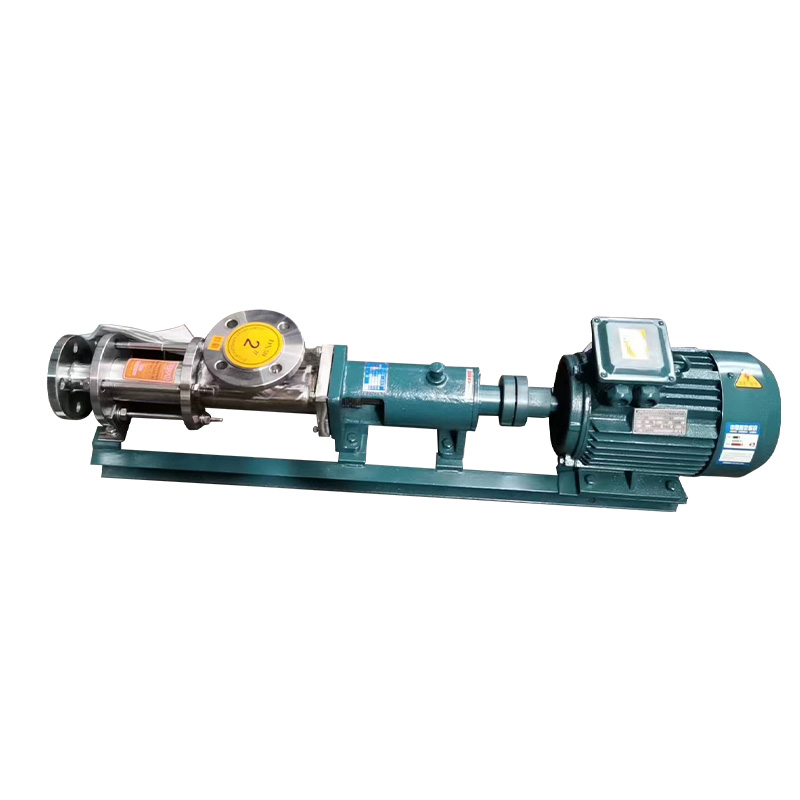



 English
English русский
русский Español
Español